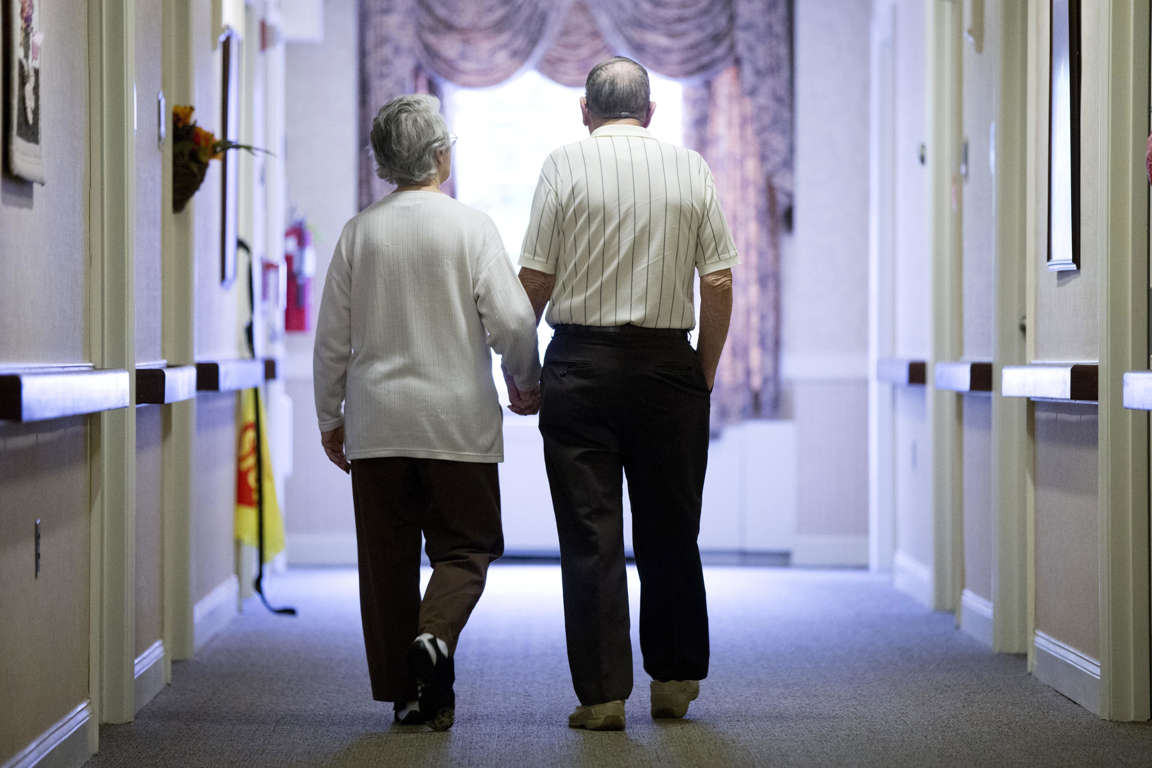
The economy is feeling the effects of the fading baby boom
By Philip Bump
The good news from the jobs report released on Friday morning was that the unemployment rate dropped to 3.9 percent. As you may know, this is measured with a different survey than the one that tallies how many workers are employed, meaning that, at times, there can be a disconnection between the two figures. That was the case on Friday: Economists predicted that more jobs would be added, meaning that the numbers were lower than expected, but the decline in the unemployment rate was good news.
But there’s an important caveat to that unemployment rate number. It is calculated by figuring out how many of those who are working or looking for work don’t have jobs. But that means that if more people simply drop out of the labor force — that is, they aren’t looking for work — the unemployment rate can go down even without more people getting jobs.
A simple example is useful. Imagine 100 people, 80 of whom are working and 10 of whom are looking for work. The other 10 aren’t in the labor force. For this group, the unemployment rate is 11.1 percent — 10 out of the 90 people in the labor force aren’t working. Now imagine that five of those who are working and five of those who were looking drop out of the labor force, say, through retirement. Now there are five people unemployed out of 80 people in the labor force, so the unemployment rate drops to 6.3 percent, even though the number of people working has gone down from 90 to 85 of 100.

That’s not exactly what’s happening here. The labor force participation rate (the percentage of a population that’s working or looking for work) remained the same from November to December. But the participation rate in December was 1.5 percentage points lower than February 2020, meaning that there are fewer people in the labor pool and, therefore, meaning that the same number of unemployed people would lead to a lower unemployment rate.
As you might expect, participation rates vary depending on age. Older Americans are more likely to have retired, so a lower percentage of that group is in the labor force at any given time. In recent years, the participation rate among those 55 and over has been fairly flat as the rate among those aged 25 to 54 has increased. (The graph below uses figures for January of each year, meaning that the value for 2020 excludes the effects of the pandemic.)
But that overlaps with another trend: America is getting older. That sounds like a necessarily true statement, but, in the past, there have been times at which more young people have been born, driving down the country’s median age. The baby boom, for example, which began in 1946 and ended in 1964, led to the United States becoming consistently younger even as Americans themselves aged.
The baby boom started 75 years ago. Since the baby boom was so big, that means that the generation that once pushed America’s median age down is now quickly pushing it up.
Consider what this means in terms of labor-force participation. Lots of people moved from the high-participation 25 to 54 age group into the lower-participation 55 and up age group over the past decade as boomers aged. In 2011, boomers started hitting retirement age, leading to their exiting the labor force entirely.
The Bureau of Labor Statistics tallies data on employment status in five-year increments, so we can’t divide out the baby boom explicitly when considering how much of the adult population is or isn’t working or seeking work. But we can create categories: age groups younger or older than the boom, baby boomers, and age groups that, in a given year, contain both boomers and Americans older or younger than the boom.
Let’s look at employment in three months: December 2011 (right as boomers began retiring), December 2016 and December 2021. Each colored section below represents the percentage of the population that was working, unemployed or out of the labor force that month, with rows delineating age groups and the sections within rows the work status of that age group.
You can see that, as the years pass, the percentage of the boomer population that’s in the labor force declines. And, concomitantly, the percentage of all adults that is out of the labor force (indicated with a percentage in the upper right of each block) increases.

If we animate those three months, two things become more apparent: the movement among boomers and the expansion of the overall population.
That orange/boomer/working section keeps contracting. More of America’s largest generation are leaving the workforce.
Demographers have long — as in, for decades — worried about how the arrival of baby boomers at retirement age would affect the job market. There are a lot of influences that change employment, of course, including things like global pandemics. But the decline in participation among baby boomers, however predicted, suggests that we’ve arrived at the point they were concerned about.
The implications are serious. Will there be enough people to fill needed jobs? To pay taxes? It’s a detailed discussion that’s been underway for a long time. But it also affects things like unemployment rates in ways that mask this fundamental and destabilizing shift.

Comments (0)